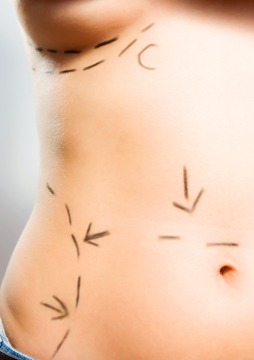Lymphedema Post Plastic Surgery Diagnosis & Treatment
Posted on November 1, 2020Lymphedema Post Plastic Surgery
 Lymphedema is a situation in which one or both of the arms or legs swell. This typically occurs due to damage to the lymph nodes, which makes them stop performing their normal function. As the lymphatic system is very important to maintain your body’s immune system, lymphedema may often lead to other complications.
Lymphedema is a situation in which one or both of the arms or legs swell. This typically occurs due to damage to the lymph nodes, which makes them stop performing their normal function. As the lymphatic system is very important to maintain your body’s immune system, lymphedema may often lead to other complications.
In a fully functional lymphatic system, the lymph nodes filter waste, bacteria, and debris from the lymphatic fluid before letting it drain into the bloodstream. When a person has lymphedema, this does not take place and as a result, there is an abnormal buildup of fluid in the extremities.
During the initial consultation, the provider will try to determine the underlying cause of lymphedema in order to recommend an appropriate treatment. plastic surgeon Dr. David Kim provides lymphedema post plastic surgery treatments to patients in Beverly Hills, Los Angeles, CA, and surrounding locations.
Types of Lymphedema
Lymphedema is of two types: primary and secondary. Primary lymphedema is a congenital issue due to genetic mutation. Secondary lymphedema develops as a result of damage to the lymphatic system due to treatment of breast, skin, cervical, or prostate cancers. Radiotherapy for cancer, infections such as cellulitis, inflammation, venous disease, obesity, and trauma or injury may also cause secondary lymphedema.
Patients who undergo breast reduction or augmentation surgery may also develop lymphedema if there is damage of the lymph nodes during the surgery. This condition may show up soon after surgery or after a few weeks, months, or even years of the procedure.
Diagnosis of Lymphedema
The swelling in the shoulders, hands, arms, fingers, chest, and torso region are one of the important symptoms of lymphedema. Patients also complain of clothes and jewelry beginning to feel tighter in the chest/arms. There is also a feeling of heaviness and reduced flexibility in movements.
The doctor will perform a thorough examination and review the patient’s medical history to arrive at a confirmed diagnosis of lymphedema. Some diagnostic tests may be performed by the surgeon, including a measurement of the affected limb volume, and imaging tests such as a lymphoscintigram.
Treatment of Choice for Lymphedema: CDT
Most doctors prefer to put lymphedema patients on a therapy called Complete Decongestive Therapy (CDT). This treatment involves a combination of methods that include the use of:
- Compression bandages to reduce fluid buildup
- Meticulous skin care to reduce the chances of infection
- Manual lymphatic drainage and physical therapy to stimulate flow of lymphatic fluid
- Exercises to improve drainage of lymph
Antibiotics may also be prescribed to deal with any infection that may be present. The therapy must be supervised by a certified lymphedema therapist who has trained for at least 135 hours in this therapy.
Manual Lymphatic Drainage (MLD) Massage Treatment Post Surgery
The success of post-surgical advanced manual lymphatic drainage massage lies in its gentleness. Most experts believe that heat and deep massage are counterproductive in a post-surgical setting; thus, it is important that you NOT substitute deep tissue massage, Swedish massage, or other massage technique for this advanced treatment. Your specific treatment plan—including when to begin advanced MLD and how frequently you should receive treatments—will depend on the surgical procedure you had and your unique state of health.
Post-surgical MLD is an advanced technique requiring specialized training, and should only be performed by a licensed massage therapist. If you have had—or if you are planning to have—a mastectomy or a cosmetic procedure such as a facelift or liposuction.
Read more about post surgery massage for MLD.
Is Surgery an Option for Lymphedema?
When CDT and other modes of non-surgical treatment fail to yield results, your doctor may recommend surgical treatment to deal with lymphedema-related swelling of the extremities. Newer surgical procedures such as lymph node transplants and lymphatic to venous anastomosis are also available to treat lymphedema.
Cosmetic surgeon Dr. David Kim receives patients from Beverly Hills, Los Angeles, CA, and nearby areas for lymphedema treatments.
Schedule a Consultation with Beverly Hills California Plastic Surgeon Dr. Kim
For more information on the surgical and non-surgical procedures and treatments by Cosmetic Plastic Surgeons Dr. David Kim and Dr. Eugene Kim. Click here to contact us today.
Serving Beverly Hills, Los Angeles, West Hollywood, Orange County, Southern California and surrounding areas.
